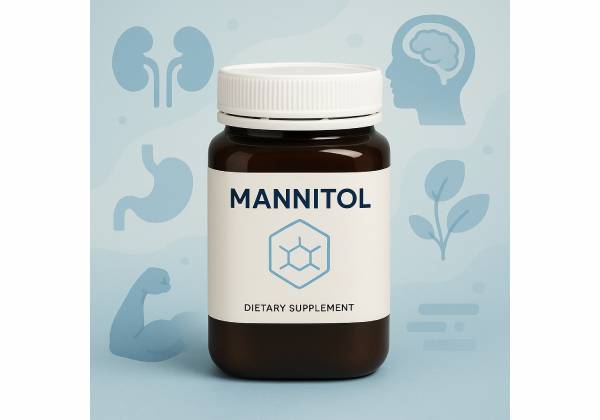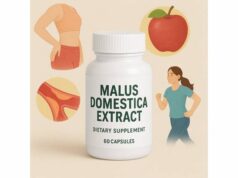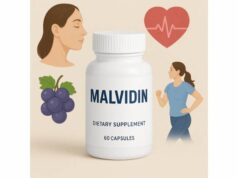
Mannitol is a naturally occurring sugar alcohol found in small amounts in fruits and vegetables and manufactured at high purity for medical, food, and supplement use. As a sweetener (E421), it contributes fewer calories than sucrose and has a low glycemic impact. Clinically, mannitol is well known as an osmotic diuretic used by healthcare professionals to reduce intracranial and intraocular pressure and, in inhaled form, to improve mucus clearance in cystic fibrosis. At consumer doses, mannitol’s poor intestinal absorption draws water into the bowel, softening stool and supporting occasional constipation relief. It also provides a cool taste and can replace part of the sugar in recipes without browning or caramelizing. Like all polyols, tolerance varies: small amounts may be comfortable, while higher intakes can cause gas and diarrhea. This guide explains how mannitol works, practical ways to use it, evidence for benefits, dosage ranges that respect gut tolerance, and the safety scenarios that matter—so you can decide if, how, and when mannitol fits your goals.
Quick Overview
- Supports occasional constipation via osmotic action; onset typically 6–24 hours after an oral dose.
- Low-glycemic sweetener; useful where modest sweetness and minimal browning are desired.
- Typical consumer oral range: 5–20 g per day, adjusted to tolerance; take with water.
- Main side effects: gas, bloating, loose stools; stop if cramping or diarrhea occurs.
- Avoid or use medical guidance if pregnant, breastfeeding, with bowel obstruction, severe kidney disease, or IBS on a low-FODMAP plan.
Table of Contents
- What is mannitol and how it works
- Benefits and where it helps
- How to use mannitol day to day
- Dosage and tolerance ranges
- Safety, side effects, and who should avoid
- What the research says
What is mannitol and how it works
What it is
Mannitol is a six-carbon sugar alcohol (polyol). In foods, it provides mild sweetness (about half that of sucrose), a cooling sensation on the tongue, and very low participation in Maillard reactions, so it resists browning. In healthcare, highly purified mannitol is used intravenously by clinicians as an osmotic diuretic—its most established role.
How it behaves in your body (oral use)
When you swallow mannitol, only a fraction is absorbed in the small intestine. The unabsorbed portion retains water in the intestinal lumen by osmosis, softening stool and increasing stool volume. Colonic bacteria can ferment part of the unabsorbed mannitol; fermentation produces gases that may lead to bloating if you overshoot your personal tolerance. This balance—water retention for softer stools versus excess fermentation—explains both mannitol’s usefulness and its side effects.
Why it has a low glycemic impact
Because mannitol is poorly absorbed and minimally metabolized, it contributes fewer calories than sugar and has little effect on blood glucose compared with an equivalent sweetness from sucrose. However, commercial products may mix mannitol with other carbohydrates; labels still matter if you track carbs.
Mechanisms at clinical doses (healthcare settings)
In hospitals, intravenous mannitol raises plasma osmolality. Water shifts from tissues into the bloodstream, reducing brain swelling and intraocular pressure. These effects require monitoring of serum osmolality, electrolytes, and kidney function and are not self-care scenarios. Inhaled, dry-powder mannitol increases airway surface liquid and improves mucociliary clearance—a use limited to specific respiratory indications under prescription.
Terminology to avoid confusion
- Mannitol the compound vs manna the botanical exudate: different things.
- Polyols include mannitol, sorbitol, xylitol, erythritol, etc.; they differ in sweetness, absorption, and GI tolerance.
- GRAS (generally recognized as safe): mannitol is recognized as safe as a food ingredient at customary intakes; this does not grant a free pass to consume unlimited amounts without side effects.
Bottom line
For everyday consumers, mannitol is a functional sweetener and a gentle, dose-dependent osmotic agent. Its benefits show up at modest, measured intakes, and its drawbacks show up when you overdo it.
Benefits and where it helps
1) Occasional constipation relief
Because unabsorbed mannitol draws water into the bowel, it softens stool and promotes bowel movements. Many individuals respond to small, measured doses when they pair mannitol with water and gentle activity (a walk after breakfast can help). Compared with stimulant laxatives, mannitol’s effect is more gradual and often gentler. Expect an onset of 6–24 hours after a dose; if you need urgent relief, this is not the right tool.
2) Low-glycemic sweetening
Mannitol’s mild sweetness and cooling effect suit herbal infusions, cocoa mixes, protein shakes, and sugar-free confections where you want sweetness without browning, stickiness, or a big glucose excursion. Two practical tips:
- It is less sweet than table sugar; most people replace 10–40% of sucrose by weight and adjust to taste.
- Because mannitol crystallizes readily, large substitutions can make baked goods crumbly or gritty. Test small batches.
3) Dental-friendly formulations
Like other polyols, mannitol does not feed oral bacteria the way sucrose does. It appears in sugar-free gums, lozenges, and chewables to reduce cariogenic potential and provide a clean, cool finish.
4) Respiratory uses (prescription-only)
Dry-powder mannitol is used clinically to improve mucus clearance in cystic fibrosis and as a bronchial challenge agent in specific testing. These uses require professional screening for airway hyperreactivity and are not consumer applications. If you have chronic lung disease, do not self-inhale bulk mannitol powder.
5) Procedural bowel preparation (medical supervision)
High oral doses of mannitol are used in some regions for colonoscopy preparation. These amounts are far above normal consumer use and must be guided by a clinician because of fluid-electrolyte considerations.
6) Situations where mannitol is not the tool
- Weight loss: It is not a fat burner. Lower caloric contribution than sugar can help in recipes, but there is no intrinsic thermogenic effect.
- Blood sugar control as a therapy: It has a low glycemic impact, but you should not rely on it to “fix” glucose control.
- Chronic constipation requiring daily laxatives: Seek medical evaluation before leaning on any osmotic agent daily.
Practical advantage summary
- Gentle stool-softening effect at modest doses.
- Useful low-glycemic sweetener with cooling sensory notes.
- Minimal browning or stickiness in confectionery.
- Dental-friendly profile versus sucrose.
Practical limitations
- GI tolerance caps how much you can use.
- Texture/grittiness limits in baking.
- Not a quick fix for severe constipation or a substitute for medical care.
How to use mannitol day to day
Choosing a form
- Culinary grade (crystalline or powdered): For beverages, confections, and recipe partial replacements.
- Capsules or measured powder (supplement format): For controlled dosing when using mannitol specifically to soften stool.
- Medical-grade vials or inhaled capsules: Prescription products handled by clinicians—not for consumer self-use.
For occasional constipation
- Start low: Begin with 5–10 g once daily with 250–500 mL water.
- Evaluate response: If no effect after 24 hours and no discomfort, increase by 2–5 g at the next trial, not exceeding a conservative 20 g/day without professional guidance.
- Supportive habits: Move your body, keep fluids up, and include soluble fiber on non-mannitol days (e.g., oats, psyllium).
- When to stop: Cramping, watery stools, or marked bloating—reduce or discontinue and rehydrate.
For recipe testing
- Beverages and chilled desserts: Dissolves well; provides clean sweetness and cooling. Start with 2–3 teaspoons (8–12 g) per serving and adjust.
- Baked goods: Limit substitution to 10–30% of total sweetener to avoid textural issues.
- Co-sweetening: Pair with small amounts of high-intensity sweeteners (e.g., stevia) for sweetness parity with fewer polyol grams.
For dental-friendly formats
- Lozenges or chews may use mannitol for structure and sweetness. If you are sensitive to polyols, limit total daily pieces and monitor GI comfort.
Stacking considerations
- Do not stack polyols on the same day (mannitol plus sorbitol, xylitol, etc.) if you are sensitive; the combined osmotic load raises the risk of gas and diarrhea.
- Separate from other osmotics like large doses of vitamin C or magnesium salts.
Storage and handling
- Keep mannitol tightly sealed and dry to prevent clumping.
- Weigh powder with a digital scale or use a consistent measuring spoon, noting that grind and humidity affect volume.
Signs you should seek care instead of self-treating
- Red-flag constipation (blood in stool, unexplained weight loss, fever, persistent pain).
- Symptoms of bowel obstruction (severe abdominal distension, vomiting, inability to pass gas).
- Need for daily laxatives to function.
Dosage and tolerance ranges
Consumer oral ranges (non-prescription use)
- Typical starting dose: 5–10 g once daily with water.
- Usual effective range: 10–20 g/day for stool softening, individualized to response.
- Maximum without medical guidance: Keep to ≤20 g/day on trial days to limit GI distress; skip the next dose if you experience cramping or watery stools.
Timing and onset
- Take once daily, ideally in the morning or early evening so you can respond to the effect.
- Onset varies; 6–24 hours is typical. If you require predictable timing for a specific event, mannitol is not ideal.
Tolerance factors
- Body size and gut microbiome: Smaller individuals and those with sensitive microbiota often have a lower threshold for gas or loose stools.
- Diet that day: Combining mannitol with other FODMAPs (fructans, lactose in sensitive individuals) increases the chance of bloating.
- Hydration: Ensure fluid intake; dehydration worsens cramping risk.
- Acclimatization: Some people tolerate a given dose better after several spaced exposures; others remain sensitive. Use your own response to set limits.
Special populations
- Children: Discuss with a pediatric clinician; if used, doses are typically 2–5 g in younger kids and 5–10 g in older children, with careful monitoring and plenty of fluids.
- Older adults: Start at the low end (5–10 g), increase slowly, and watch hydration and electrolytes.
- People with diabetes or prediabetes: Mannitol itself has minimal glycemic impact, but products may contain other sugars. Monitor as usual and keep servings modest.
Not consumer dosing (for awareness only)
- Intravenous mannitol to reduce intracranial or intraocular pressure and inhaled mannitol for cystic fibrosis are prescription therapies with specific protocols, monitoring, and contraindications. Do not attempt to replicate clinical dosing outside medical care.
Practical dosing ladder (example)
- Day 1: 8 g with a large glass of water.
- Day 2: If no effect and no discomfort, 12 g.
- Day 3: If still no effect, 15 g. Stop if cramping or loose stools develop at any step; when effective, avoid repeating for several days in a row to reduce tolerance issues and encourage normal habits.
Safety, side effects, and who should avoid
Common, usually mild
- Gas and bloating: From bacterial fermentation; more likely at higher doses or when combined with other FODMAPs.
- Loose stools/diarrhea: A clear sign you exceeded your tolerance.
- Abdominal cramping: Often dose-related; resolves by reducing or stopping intake.
Less common but important
- Dehydration or electrolyte shifts if diarrhea persists—watch for lightheadedness, fatigue, or muscle cramps; rehydrate and consider oral rehydration solutions if needed.
- Allergy: Rare with mannitol itself, but stop and seek care if you notice hives, swelling, or breathing difficulty.
Who should avoid or seek medical guidance first
- Pregnancy and breastfeeding: Insufficient safety data for routine use as a laxative—consult your clinician.
- Infants and very young children: Do not self-dose; get pediatric advice.
- Irritable bowel syndrome (IBS) or on a low-FODMAP plan: Mannitol is a FODMAP; even small amounts can trigger symptoms.
- Known or suspected intestinal obstruction, severe constipation with alarm features, or recent bowel surgery: Do not self-treat.
- Advanced kidney disease or uncontrolled heart failure: Fluid shifts from osmotic agents can complicate management—seek care team guidance.
- Electrolyte disorders: Recurrent diarrhea can worsen imbalances.
Drug and nutrient interactions (practical points)
- Diuretics or drugs affecting electrolytes: Additive risk of dehydration and imbalances if diarrhea occurs.
- Other osmotics the same day (high-dose vitamin C, magnesium salts, sorbitol, lactulose): Raise the risk of GI distress.
- Timing with medications: Rapid bowel transit may affect absorption of oral drugs taken near the time of a large mannitol dose; separate by several hours and consult your pharmacist.
Stop and seek help if you notice
- Severe or persistent abdominal pain, blood in stool, fever, unintentional weight loss, or symptoms lasting beyond 48 hours despite stopping mannitol.
Quality and labeling
- Choose reputable brands that disclose gram amounts per serving and test for purity. For blends, confirm which polyols are included. Store dry and sealed to prevent clumping.
What the research says
Clinical use in the hospital
Guidelines in neurocritical care support hyperosmolar therapy—either mannitol or hypertonic saline—for elevated intracranial pressure when monitored by professionals. Choice depends on patient factors, access, and monitoring capabilities, and outcomes often depend on broader care beyond osmotherapy. In ophthalmology, mannitol’s osmotic effect can quickly lower intraocular pressure before procedures. These are not consumer applications but provide context for mannitol’s osmotic power and safety requirements at therapeutic doses managed by clinicians.
Inhaled mannitol for cystic fibrosis
Randomized and pooled analyses in cystic fibrosis show that inhaled dry-powder mannitol can improve lung function and aid mucus clearance in selected, screened patients. Pre-screening for airway hyperreactivity and proper inhaler technique are essential. Again, this is prescription territory with specialist oversight.
Oral mannitol pharmacokinetics at high doses
Clinical research using oral mannitol for colonoscopy preparation confirms that a meaningful fraction of mannitol can be absorbed systemically at very high doses (tens of grams), with linear increases in blood levels as amounts rise. This underscores why consumer dosing should remain modest and why procedural regimens belong in clinical care where hydration and electrolytes are monitored.
GI tolerance and microbiome
Systematic reviews of polyols document dose-dependent GI effects—gas, bloating, and osmotic diarrhea—across healthy individuals and those with IBS, with individual thresholds varying widely. Some evidence suggests modest bifidogenic effects at lower polyol intakes, but comfort limits and personal tolerance should guide use. Practically, most people do well when they start low, increase slowly, and avoid combining polyols.
What we still need to know
- Head-to-head consumer-level trials comparing mannitol with other gentle laxative strategies (hydration, soluble fiber, magnesium) for episodic constipation.
- Long-term data on frequent small doses in sensitive groups, such as older adults with multiple medications.
- More granular mapping of microbiome predictors for who tolerates which polyol.
Take-home evidence synthesis
For everyday use, mannitol is best framed as a functional sweetener with a gentle osmotic effect that can help occasional constipation and enable low-glycemic recipe design, provided you respect your tolerance threshold and avoid daily reliance. The powerful intravenous and inhaled uses you may hear about are clinician-only applications that illustrate mannitol’s pharmacology but do not translate to self-care dosing.
References
- Mannitol 2024 (Reference Overview)
- Guidelines for the Acute Treatment of Cerebral Edema in Neurocritical Care Patients 2020 (Guideline)
- Inhaled mannitol for cystic fibrosis 2020 (Systematic Review)
- Pharmacokinetics of oral mannitol for bowel preparation for colonoscopy 2022 (RCT/PK Study)
- A Systematic Review of the Effects of Polyols on Gastrointestinal Health and Irritable Bowel Syndrome 2017 (Systematic Review)
Medical Disclaimer
This content is educational and is not a substitute for professional medical advice, diagnosis, or treatment. Always consult a qualified healthcare professional before using mannitol for constipation or any health purpose, especially if you are pregnant or breastfeeding, have kidney, heart, or bowel conditions, or take prescription medications. Seek urgent care for severe or persistent abdominal pain, blood in stool, fever, or dehydration.
If this guide helped you, please consider sharing it on Facebook, X (formerly Twitter), or another platform you prefer, and follow us for future evidence-based explainers. Your support helps us keep producing careful, people-first health content.










